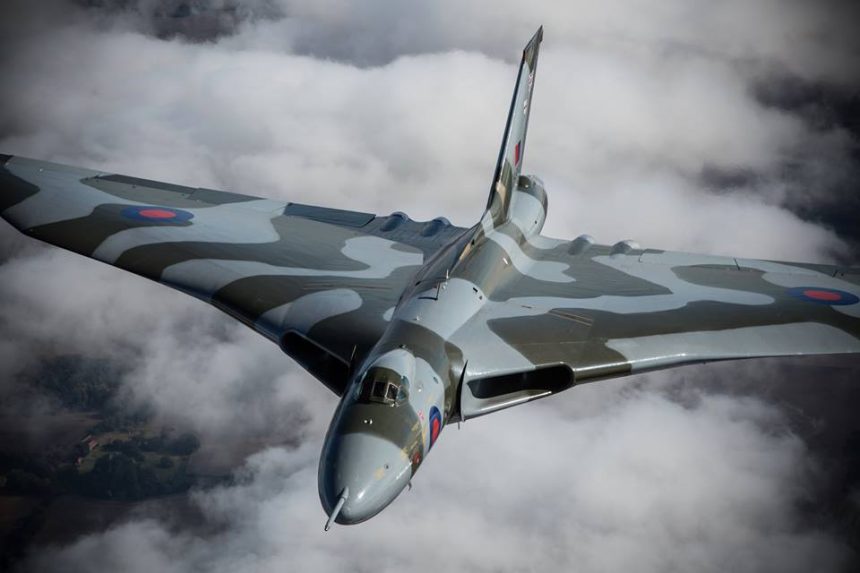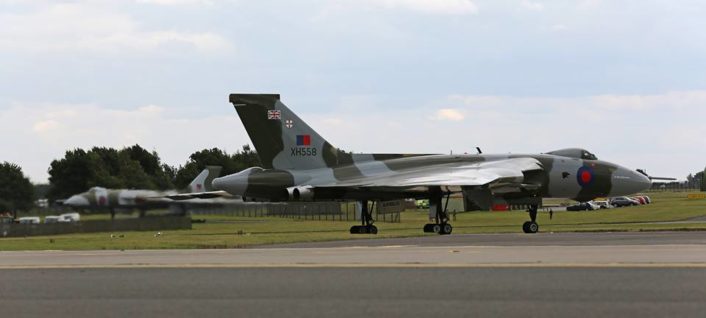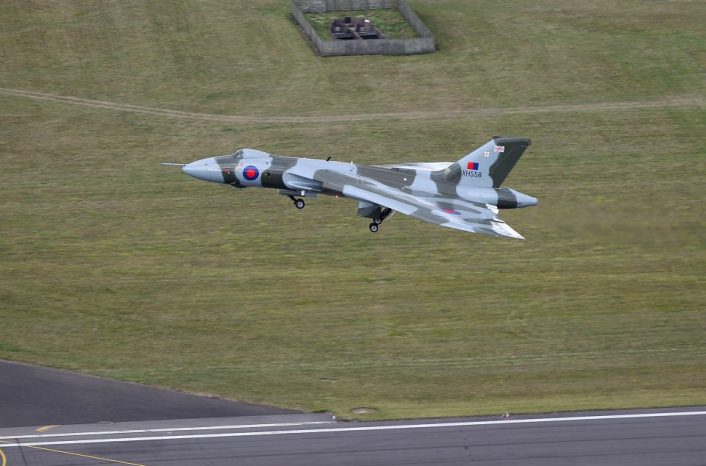SEAD missions, Vulcan style.
The RAF Avro Vulcan was initially planned to be retired in early 1982 but the outbreak of the Falklands War, in April that year, postponed the withdrawal of the most distinctive among the bombers that (along with Vickers Valiant and Handley Page Victor) formed the Britain’s nuclear deterrent V-force.
Most important, the Falklands conflict has been the only time the Vulcan was used in anger: in fact, seven very long-range “Black Buck” missions were performed against Port Stanley, with three of these sorties flown by the bombers in the SEAD (Suppression of Enemy Air Defenses) role, using AGM-45 Shrike missiles mounted on makeshift underwing pylons.
Two surveillance radars threatened British air operations against the Islands: an Argentine Air Force Westinghouse AN/TPS-43F placed near Stanley Airport on Apr. 6 (later moved into the town itself for protection), and an Argentine Army Cardion TPS-44 positioned close to Stanley on the Airport road.
To destroy the Argentine radars the RAF considered to use the Martel missile, but since the U.S. Air Force provided the AGM-45 it was decided to arm the Vulcans with the Shrike.
As explained by R. Burden, M Draper, D. Rough, C. Smith, D. Wilton in their book Falklands The Air War, the first anti-radar Vulcan mission (“Black Buck 4”) was launched from RAF Wideawake Airfield at Acension Island on May 28, using the Vulcan XM597 crewed by Sqdn. Ldr. C.N. McDougall (Pilot), Fg. Off. C. Lackman (Co-pilot) plus Flt. Lts. D. Castle (Nav-Radar), B. Smith (Nav-Plotter), R. Trevaskus (Air Engineering Officer) and B. Gardner (another Vulcan Pilot).
Unfortunately the aircraft was forced to abandon the mission after the Victor tanker aircraft supporting it experienced the failure of the hose drum unit (HDU). “Black Buck 5” was launched on May 30 shortly after midnight, using the same aircraft and crew and this time both the Shrikes carried by the bomber were launched, but they only slightly damaged the AN/TPS-43F that returned operational again 24 hours after the attack.
The same aircraft and crew took off again from Wideawake for “Black Buck 6” on Jun. 2, this time armed with four Shrikes instead of two, for another raid against the same radar.
The AN/ATPS-43F radar was switched off as the Vulcan approached the target during the early hours on Jun. 3.
After the aircraft spent 40 minutes overhead waiting for this or any other radar to be switched on, its radar warning receiver (RWR) picked up an Argentine Army Skyguard radar which was acting as a fire control unit for one of the 601st Anti-Aircraft Artillery Group (GADA 601) anti-aircraft batteries close to Port Stanley.
Immediately the Vulcan launched two Shrikes that destroyed it.
After having loitered on station for few more minutes hoping that the AN/TPS-43F radar might be switched on again, the bomber reached its Victor tanker for an air-to-air refuelling (AAR) half way back to Wideawake.
Noteworthy the Vulcan was forced to interrupt the AAR, given the break of the tip of its refuelling probe and the crew had to divert to Rio de Janeiro airport in Brazil.
Due to its very low fuel state, the bomber climbed to 40,000ft, where it burned less fuel and where its aircrew tried to release the two unfired Shrikes. Eventually one of them failed to fire and remained attached to the pylon because there was no other system for releasing it.
The aircrew collected all the classified documents together, placed them inside a hold-all and jettisoned them through the crew entry door after the cockpit had been de-pressurised and the crew had put on oxygen masks. Then, after diplomatic channels contacted Embassy staff at Rio de Janeiro, arrangements were made with Brazilian ATC and the Vulcan performed an emergency landing at Rio’s Galeao Airport.
After the aircraft engines were shut down 2,000 lbs of fuel remained, less than what would have been required for an overshoot and one circuit.
The Brazilian authorities impounded the aircraft and the unfired missile and the Vulcan aircrew was very well treated during their stay at Rio’s Galeao Airport. The chance to return home was soon offered to them but they decided to remain with their bomber until it was released on Jun. 10, when the aircraft returned to Ascension Island.
Image credit: Crown Copyright

















